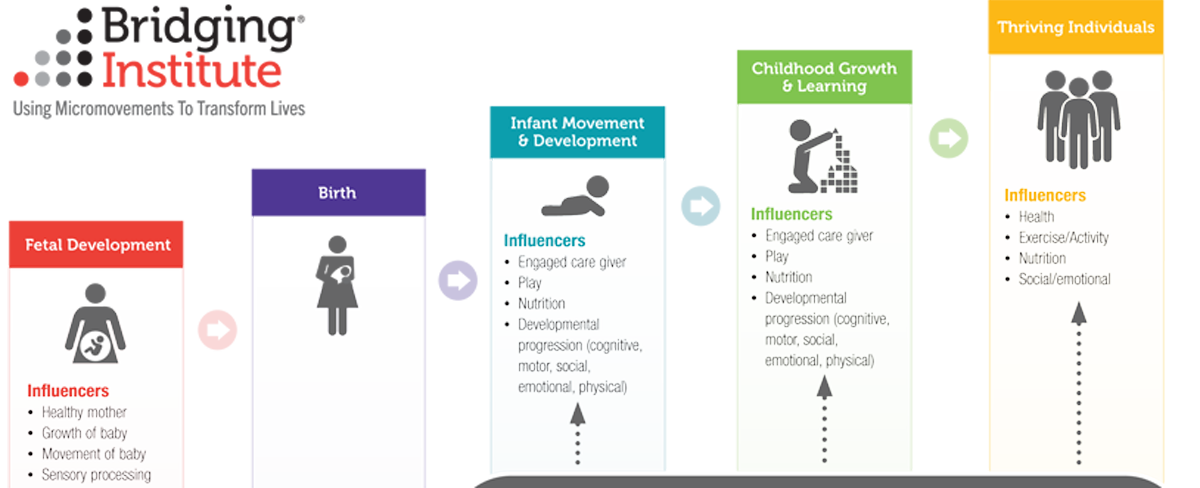Why Is the “WHEN” So Important to Helping us Help You?
Check out this diagram (click to enlarge)
“When?” is one of the most important pieces of information we consider
You have pain, balance, coordination concerns, or anxiety. As part of our process of getting you back on track physically or developmentally, we want to know what happened and when in order to understand how your micromovements got off-track. This is where the best clues are!
Many other professionals are trained to focus “what’s bothering you.” If it’s your knee you may have been given exercises to strengthen muscles around the knee, tape, and maybe a massage. Focusing on the symptoms rather than the cause is often not enough.
“When” provides clues about “Why” in our problem-solving
We want to understand “why” there is stress to your knee. Was it from:
- a recently sprained ankle?
- a rotated leg because of compensations following abdominal surgery?
- your foot turned in from birth?
The “When?” matters a lot; it tells us how many phases of compensation your body has developed.
“When” often ties in the hidden traumas from prenatal and birth
The diagram above is our framework of trauma that we take into consideration for all ages. At each stage of life there are unique types of trauma or implications to development/life, and compensation. Trauma at birth or during prenatal development is especially significant.
‘When” also provides insights about how easy or complex the process to recovery will be
A rotated leg from an early childhood injury or infancy is very different from a fall you had as an adult. Here are examples of some ways the timing impacts the complexity of resolving your issue:
- An adult’s injury is easier to resolve if there are no prior movement traumas.
- A child’s injury is easy to resolve as a child, but may take a few follow-up sessions as the child grows. It’s good to mitigate any residual stress as the leg grows.
- Pain as an adult when there is also a history of an early trauma or prior injuries is the most interesting to work through. It is truly a case of peeling away the layers, yet you feel and move better as Bridging® resolves each layer.
When did your micromovement get disrupted?
We need your help!
Were you worried about your baby developing on track?
We hear story after story from worried parents. Your frustrations include not being taken seriously when your child was falling behind. And you also struggle to find resources for help.
Bridging® can bring a fresh approach to helping infant development. Before developing a program we’d love to learn from your experiences so we can quantify parent experiences to better help others.
Can you share your experience?
We promise it will only take 1-2 minutes. (Even if your child is past the infant stage, your input regarding that period of development is helpful to us.)
Click Here to Begin
Follow-up with Michael (NEW)
| We check in with Michael a month later to see how he’s doing. He originally hoped to find some help with feeling calmer and being more active.
Have a look! |


